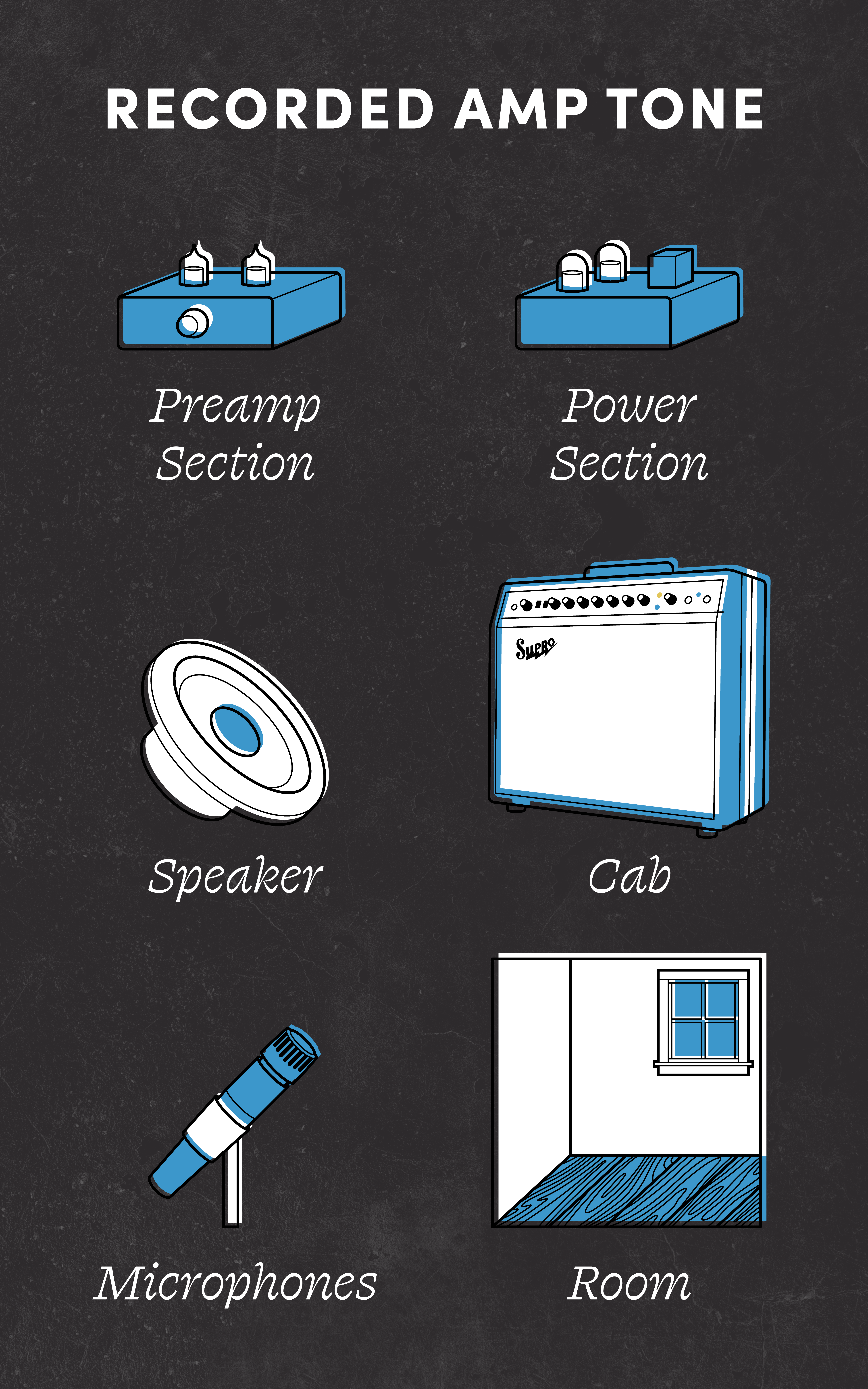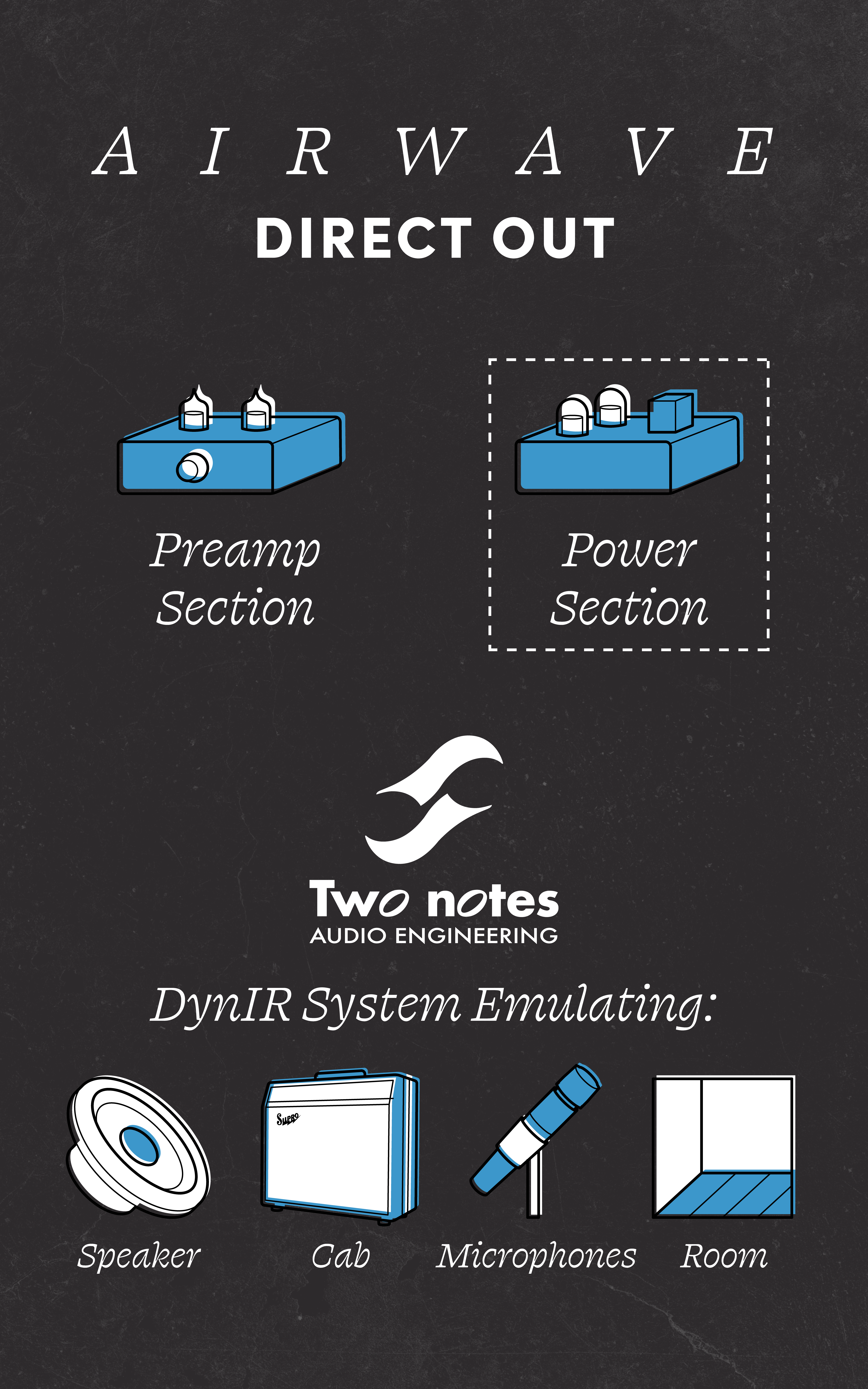Back to all news

News
06/23/2025
Airwave: The Ultimate Studio Amplifier
The all-new Supro Airwave, is a powerful 1×12 tube combo with cutting-edge cabinet simulation technology built directly into the amp. Airwave’s DynIR stereo DI, powered by Two notes, delivers mic’d speaker cabinet emulations via the onboard DSP module, allowing guitar players to perform and record without having to rely on physical microphones to capture the sound of their amp. This technology allows players to access 12 signature Supro tones via the front panel of the amp, and countless more with infinite options through Two notes’ innovative Torpedo software.
Supro provided the Airwave’s fiery front end, a true-blue analog gain stage that allows the DynIR to sing in an honest and raw way, all in a digital context. Two notes lends this amp its exacting cabinet recreations for a limitless digital flexibility previously unheard of in Supro’s all-analog history. The Airwave can run straight into an interface, record and operate silently, while still igniting all the passionate energy that an analog tube amp promises.
For some, it’s a rather complicated-sounding setup with countless workflows, so to better illustrate the depth and surprising simplicity of the design, we want to explain how its component parts function on an elemental level.
What Determines Recorded Amp Tone?
It’s tempting to think of guitar tone as something simple—something that occurs between your pickups and your amp, but there are countless factors at play in every step of the process. In a recorded guitar tone, between the players hands and your ears, there is a dizzying array of transducers, amplification stages, effects, carefully considered construction materials chosen for their sonic reactivity, wooden cabinets, glue, vacuum tubes, paper cones, magnets, oil, transformers, and billions of oxygen molecules all vibrating at pitch, all cascading toward your ears in an instantaneous Rube Goldberg domino effect, traveling at the speeds of light and sound.
The Breakdown
For any given amplifier, the tubes in the preamp, the harmonic saturation of the output transformer, the size, impedance, age, and material of the speaker, the choice and placement of microphone, and even the geometry of the room in which it was recorded—everything leaves its own sonic fingerprint.
Recorded amp tone is the sum of the preamp and power sections, combined with a specific speaker and cabinet, in a specific room, recorded with specific microphones. The amplifier’s preamp section, which is responsible for dramatically raising the level of the incredibly quiet incoming signal from the pickups, is responsible for much of the clarity and body of the sound. The power amp section, which includes an output transformer and all the necessary componentry to prepare the signal for amplification through the speaker, is often credited with providing much of the character, grit, and “mojo” that make an amp unique. Supro especially has a distinct tonal characteristic to their power amps that connect the modern amps to their vintage counterparts.
The pre and power sections of a traditional tube amp are typically fused together and the more distinctive aspects of their respective characters are often perceived as inextricable. What makes the “pre” mode available via the Airwave’s pre/post button so remarkable is that it allows you to create a direct output where there normally could never be one. But through the DI—with no speaker to drive—you can hear your guitar signal isolated purely through the circuitry of the preamp without the coloration of the output transformer or the power stage. Conversely, you could switch it back in and hear the added heft and harmonic content, direct from the point in the circuit where the signal would normally meet the resistance of the speaker.

The Sound of The Airwave
All of these factors can feel like too much to consider when recording the sound of your guitar, but luckily there are people like Dave Koltai and Guillame Pille to consider it for you. Their companies, Supro and Two notes, are dogged in their pursuits of tone, but their work is done in different worlds. Supro’s happens on the workbench, and in the case of the Airwave, they are responsible for the tactile, in-the-room componentry that brings a guitar signal to life right in front of you. Two notes’ pursuit of tone happens in the studio and on the Operating System. In the context of the Airwave, they are responsible for the capture and digital recreation of dozens of exotic and vintage cabinets and every other component in a recording studio that might affect a recorded guitar’s tone.
Two notes’ Torpedo software is designed to capture and faithfully emulate everything that happens between the point just before the amplified signal hits the speaker until it reaches your ears. This can include the size, material, and age of a given speaker, the construction and material of the cabinet, the microphones used on the amp, their angle or position within the live room, the ambient reflections of the room itself, and even the equalization, dynamics processing, and additional effects used in the recording studio on the other side of the glass. Everything between the vacuum tubes and your ears is handled by Two notes, and it is all infinitely customizable in-the-box, allowing you to dial in a bevy of world-class recording studio tones with flawless consistency.
In November of 2024, the Supro team collaborated with the Two notes team at the Hit Factory in New York City to meticulously capture 18 signature Supro cabinets to be modeled for this project. Every amplifier in the selection was specially chosen for the project to give each user the broadest tonal palette possible within the Supro world. The collection was chosen from Koltai’s personal library of amplifiers, as well as several special pieces from friends of the brand like Marco Moyer, guitar tech for Joe Perry and Robbie Krieger. The team also sourced an original 1959 Coronado that had been modified with a 12-inch speaker to closely emulate the rig that Jimmy Page used to record Led Zeppelin 1.

“The capture method consisted of moving eight different microphones around the room in various positions while blasting frequency sweeps through the different cabinets one at a time while recording the audio through the studio’s SSL console,” says Koltai. “This is an extremely detailed process that has to be done meticulously in order to achieve consistent results.”
Whether it’s in the box, or in the room, every person who contributed to this project has an awareness of how much variation there is within this tonal realm. “It’s incredible to see how different each speaker can be,” says Two notes’ Guillamme Pelle. “Even by keeping the same speaker and having it in different enclosures, you will realize how diverse those tones are and how impactful they are to your amp and your recorded sound.”

